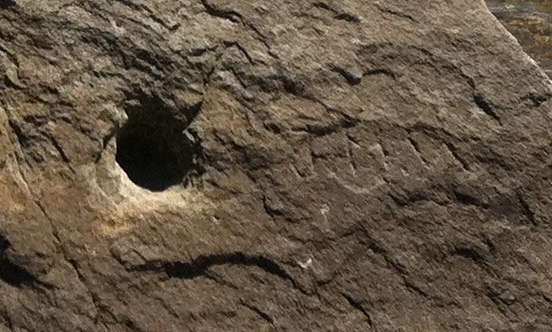
Growing up across from Amherst Island during my childhood, I never really visited the large island across from me in the 18 years I was so close to it. Waking up each morning in my home on Nicholson’s Point, I was greeted by a wonderful panoramic view of this unique island situated on the eastern end of Lake Ontario. Approximately seventy square kilometres in size, Amherst Island is one of the few remaining tranquil islands on Lake Ontario untouched by the tourist hordes, its rich history yet to be explored in detail. Perhaps that is why the discovery of a large stone with a curious inscription on it has gone unnoticed, and unexplained.
AMHERST ISLAND HISTORY
There is a vast history of Amherst Island that I can not give proper justice, but I can give a brief account of its interesting past throughout time. Originally inhabited by Indigenous peoples who called it Koonenesgo, meaning “drowned land” it was later granted to the French explorer La Salle in 1675 when King Louis Of France gave La Salle all land ten miles west of Fort Frontenac (Kingston), which included this large island. La Salle, in turn, gave the island to his loyal lieutenant, Henri De Tonti, an Italian employed by the French who had a previously blown his hand off when a grenade exploded near him during a battle. Replacing his missing hand with a prosthetic hook covered by a glove, he earned the nickname “Iron Hand”.

Henri de Tonti, the one handed man of whom the island was once named after. (image: Wikipedia)
Neither La Salle nor Tonti apparently ever visited the island that they owned, but it was always called Isle Tonti after the hook handed Italian. Lying uninhabited for many decades, in 1788 it was granted by the British Crown to Sir John Johnson, but then in 1823 Sir John’s daughter, Catharine Maria Bowes, took over the island. Local legend says that Maria lost the island in a card game gone sour back in Ireland. Whatever happened, Maria Bowes was in financial ruin and gave power of attorney to Stephen Moore, 3rd Earl Mount Cashell, who purchased the island from her in 1835.

1878 map of Amherst Island, later renamed after a British general. (Wikipedia)
Mount Cashell wanted Amherst Island for profit and other reasons, hoping Irish immigrants would help him clear and cultivate the land, thus increasing its value and provide a steady income from his leasing the land to the Irish settlers. They prospered on the island, and schools, churches, and stores were built, as well as homes and other necessary businesses for the population of 1,000 people that it had by 1841. There was even a fort built on the eastern end of the island to protect it from any invading Americans from across the lake. Cashell would also soon succumb to financial difficulties with the island, and in 1856 he foreclosed on Amherst Island it was sold by public auction for much less than its market value to a Robert Perceval-Maxwell. Maxwell sold or leased farmland for a variety of economic ventures including dairy, shipbuilding, timber, and grain harvest. The island today operates mostly as an agricultural island, with a variety of summer homes and other communities, sitting much like it has for decades.
A VISIT
Having sold a painting to customers on Amherst Island, I had agreed to deliver the piece to their home, a visit I had not made to the island in over 20 years. The last time I was on the island I was 12 and sailed a dinghy across to it from my home on Nicholson’s Point, grabbed a Coke at the General Store, then sailed back. This time I wanted to explore the island in more detail , knowing it was virtually untouched and probably contained numerous historical elements waiting to be explored. One of these being an old fort labeled on an old map I came across at the Glanmore mansion in Belleville, ON.
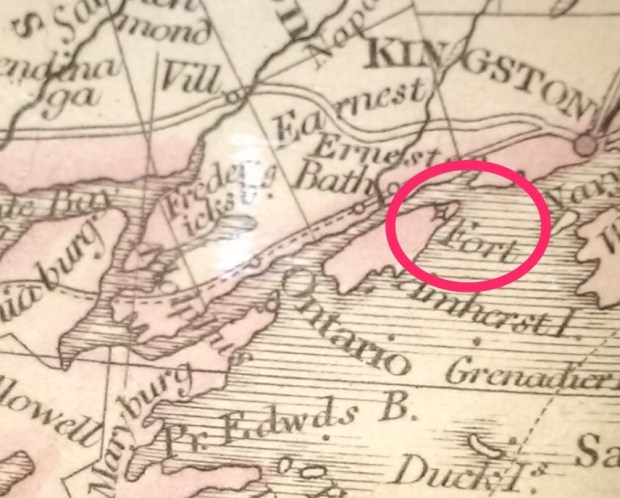
A fort marked on an old map of Amherst Island.
There, marked on the map was a fort, something I had never heard about. So, wanting to look for any remnants of this marked fort, I packed the car with my camera, my painting, and boarded the ferry in Millhaven, mere minutes from my childhood home.

The serene island on Lake Ontario. (Google Maps)
Arriving on the island, I was struck by how serene and peaceful it was, quietly stuck in another era, with its old homes, barns and stone ruins from the past spotting the landscape. After delivering the painting and enjoying a few cups of coffee and a chat with my new “islander” friends, I headed in the direction of where I thought the old fort ruins may be located. Travelling along the south shore of the island, I stopped to inspect a large stone off the shore, a granite boulder that looked out of place among the predominant sedimentary limestone that makes up most of the bedrock on the island.
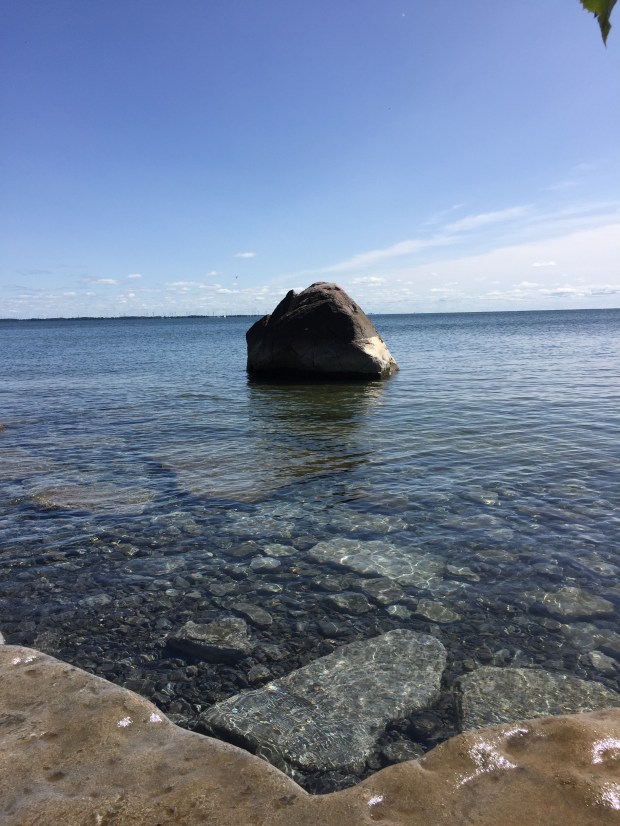
A large boulder amidst the limestone.
Cursing the fact I didn’t bring my swimsuit, I got as close to the boulder as I could, then turned around and noticed a weird stone grotto built into the cliff of the shore. In the dirt next to it was a bizarre tooth.
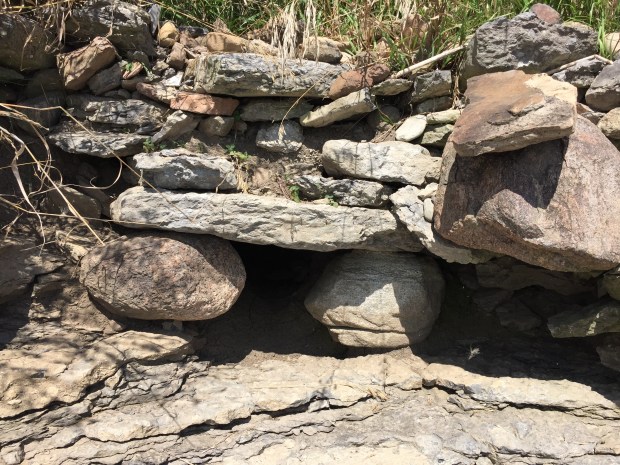
An oddly manmade looking stone grotto on the shoreline of the island.

Bizarre looking tooth found buried in the dirt near the grotto.
Curious, I now walked along the shoreline looking for other oddities and came across another large granite stone, this time on the shore and propped up with wedges underneath, to make it a standing stone, or “dolmen”.
Carrying on further I came across a very large stone with two odd holes in it, and what looked to be an inscription on it.
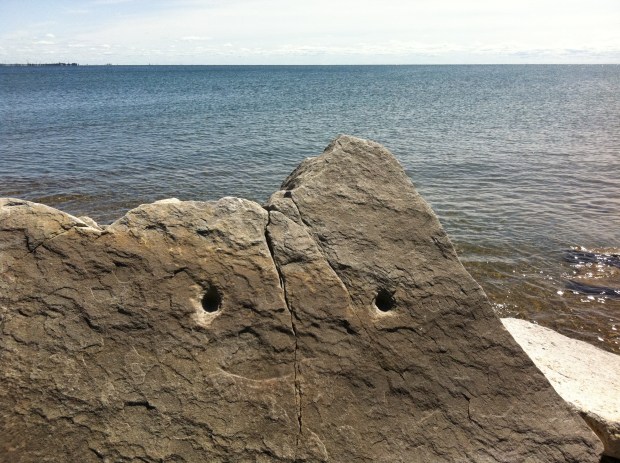
Large rock with two holes and odd inscription (right)
THE INSCRIPTION
I’m unsure as to why two holes were in the rock, but I was even more unsure as to why there would be an inscription carved into the stone. Was it someone’s initials scribed into the rock’s surface by some early graffiti artist on the island? That was my first thought until I noticed the last figure was not a letter, but a symbol. What looked to be “JMW” seemed to more like a line of symbols than letters, and so I took a closer look.
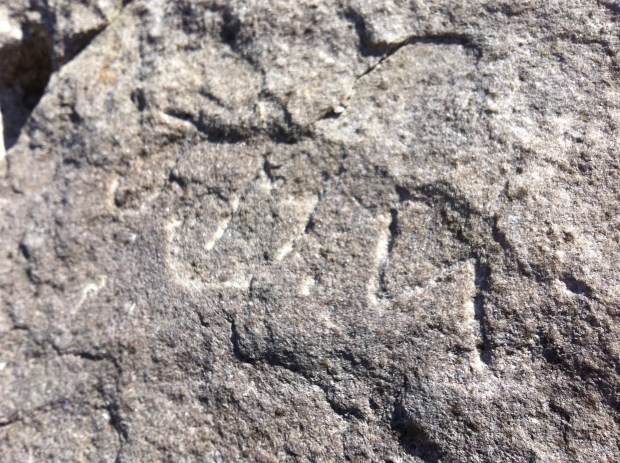
I took photos of the rock and inscription and carried onwards to where the fort should have been, but found no trace of this old structure supposedly built by islanders who were armed and ready to engage any attackers from the United States to the south, coming across the lake during the Upper Canada Rebellions of 1837. The fort was apparently later abandoned, and fell away into history, its remains and location unknown. I returned back to the mainland with more questions than answers, as this island seems to have some odd ruins, interesting geological features and a beauty that needs to be re-visited.
ANALYSIS
The inscription look old and weathered, not a recent carving into the rock. The holes seem to be newer, but the symbols look much older. This of course would require a professional examination.
Studying the stone’s inscription further, I believe an explanation could be one of the following:
- Early settler or more recent graffiti carving of initials “JMW” but the carver did not have time to finish his letter ‘W’ with a final arm of the letter missing.
- Indigenous inscription
- Possible ancient visitor inscription
EXPLANATION 1: Modern/Early settler inscription

The most likely explanation is that the rock was scribed by some local resident bored at the water’s edge one day, who attempted to carve his initials into the rock but never had time to finish the last letter. Perhaps he was daydreaming and just started making holes in the rock as well. The island was once inhabited by out-of-work Rideau Canal Stone Masons of Irish and Scottish descent, so that could be likely. But why there? Why in such a remote and secluded spot? And why would the carver not finish their initials? After going to so much trouble, would you not want to finish the last letter of your initials before leaving, or at least come back later to finish the final arm of the letter W? The “M” inscribed, may not even be an M, but rather two separate symbols since they don’t seem to connect…but who knows until it is studied further.
EXPLANATION 2: Indigenous Carving
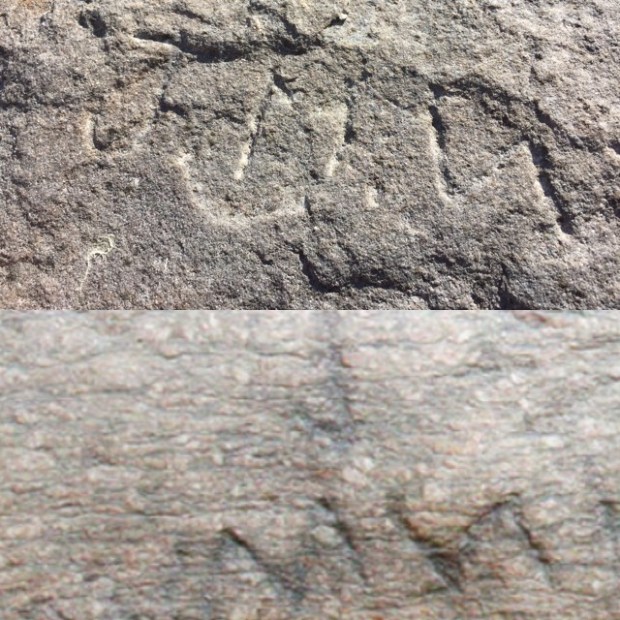
Amherst Island was once inhabited by the Iroquois and other natives to the area, so perhaps this rock was marked by a group who settled nearby. The markings seem to coincide with the markings left on a stone in Massachusetts called the Bourne Stone, with almost identical “J, M” , and the squiggle. Is there some connection to the Amherst Island stone and the Bourne Stone despite their separation by hundreds of kilometres? From my preliminary research, the local indigenous people did not carve stones, with the only evidence of ancient petroglyphs being near Peterborough. Were they made by the same tribes? Perhaps someone knows.
EXPLANATION 3: Ancient explorers
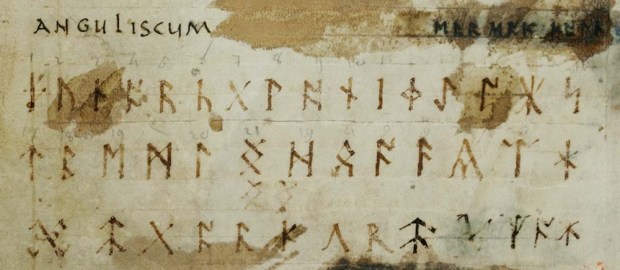
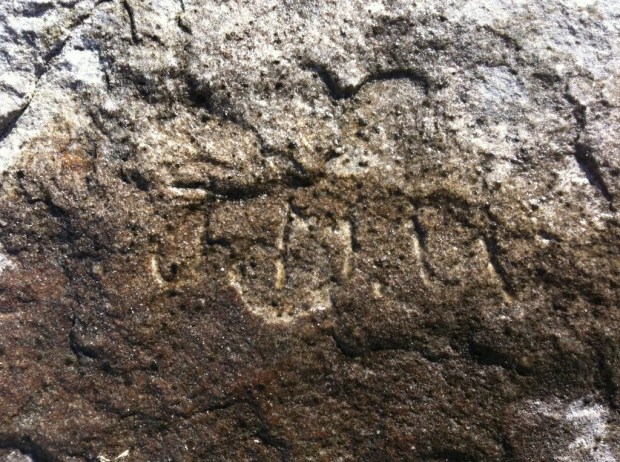
What first struck me about the last two figures of the inscription were their similarity to ancient rune scripts, the Norse runes and the ancient Futhark used by Ango-Saxon tribes.
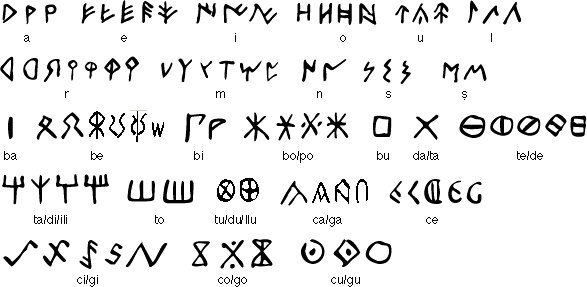
Upon closer comparison, the inscription symbols also resemble Iberian Script, a script used in the southern parts of France and Spain during the early BC years. The symbols seem almost identical. Were ancient explorers from Europe on the Great Lakes leaving their mark on Lake Ontario? With the discovery of a Norse spearhead in 1929 across the lake from Amherst Island, it does seem plausible that perhaps Norse visitors made it to Lake Ontario and left a mark when they were here a 1000 years ago.

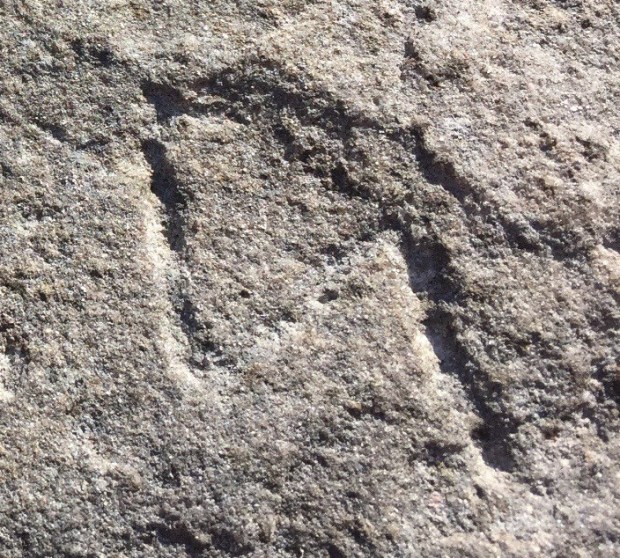
Again, I defer to the professionals to study the Amherst Stone in greater detail, but until that happens, the rock and its inscription will continue to weather the years on the shores of Amherst Island in quiet hiding.
Andrew King, September 2017
SOURCES
https://en.wikipedia.org/wiki/Amherst_Island#cite_note-4
https://en.wikipedia.org/wiki/Henri_de_Tonti
https://en.wikipedia.org/wiki/Elder_Futhark
http://www.ancientscripts.com/futhark.html


Good story, thanks.
Thanks for reading!
My hubby and I were there recently just for a day out. It is a beautiful area with incredible shorelines. I loved the peaceful wind turbines that apparently the locals don’t appreciate. We walked under one and found it to be almost silent. I guess the residents were inconvenienced with rough roads and traffic. I get it. The contribution to the environment and beauty added to the island will be a good payoff for the residents eventually.
The Wool Shed was a nice visit and the lamb we bought there delicious. I drooled over the woolen blankets.
We met Mayo the famous Amherst potter and being a potter myself, I felt a kinship immediately lol.
The General Store hosts some very friendly people and good coffee. Keep the building together folks lol!
I can not express how much I loved and envied the stone fences. I want one at our house! Breathtaking place to visit.
JB
Nice piece, you should send your description of our island to our provincial government who are the only ones who can stop the destruction of our island that has just commenced. All the peace, tranquility and untouched by tourists/ industry is coming to an end with the construction of the wind turbines. The start of road building etc started yesterday
Too bad, the island seems to be rich in unexplored archeology…they need to lobby for the ceasing of wind turbines until all archeological studies have been done…and even then, not really…would spoil the landscape.
Fascinating reading as always, Andrew!
Fascinating story. These rare places untouched by commercialization and industrialization should be preserved as a link to the past. Andrew I would like to know more about the odd looking tooth found. The crown of the tooth looks very unique in its shape.
Thanks for the story, Nelson Gallant
Hi Nelson, thanks for reading…the tooth is apparently a hog tooth as confirmed by the museum of nature here in Ottawa.
There’s so much of interest in this article: the man-made grotto; the large granite rock in the water at such variance with the surrounding limestone; the *tooth* and then the carvings and holes in the rock ! And you did it all of your own initiative, including locating the map with the detail of the fort. Then set off and discovered evidence which may well be of highly significant value not only for Canada but the world. I’m scared, to be honest, that some politician might be tasked with obliterating the evidence under the guise of ‘foreshore works’ or some other excuse. Sincerely hope not. I’m sure I’m not the only one to be fascinated by the tooth you found. If you find out its origins, please let us know. And thank you again for your fascinating articles and information 🙂
I will be keeping an eye on the stone and let readers know if it has been “altered” in any way.
Well I will Take a journey soon, I will Find It
Dear Andrew King,
My “Wright” relatives were some of the first on the island. George (one of three in consecutive generations) Wright and Thomas Polley ran the general store near the ferry landing, donated the land for the school, and their names litter the cemetery there. George (#2) Wright kept a “diary” that ended up in your national archives. I have a digital copy of it. He mentions the rock and the carvings in his diary. He died in November, 1879 at the age of 50, having fathered 9 children. I discovered, within the scratchings within that diary, that he had fathered an illegitimate daughter with a neighbor girl. Amazingly, given the situation and the times, the two of them (daughter and father) kept in touch until his death. That secret had been lost to history until I unearthed it a few months ago. I found your post while searching for history of Amherst Island. I am certain he died with many interesting stories untold. I even wonder if he and his “lover” carved those initials…George Nelson Wright was his name, a Scot from Perthshire, whose father, also George, and his siblings emigrated in May 1845. The line down to my family came through George (3) Wright, who came into the Red River Valley in 1881 with a number of other Scot-Canadians. We are in Minnesota. I want to get to Amherst some day. My brother has been there and met people who had known the children of the original family. Much of this history was unknown to us until that visit in 1995. Thanks for posting. I hope you get this message in late 2022. TEW.
Awesome! Thanks for the note, and Amherst island is a magical place you must visit!